
The smartphone industry is growing every day. Companies offer many smartphones with different sets of features at various price ranges. Even if you narrow down your smartphone search parameter, you would still be left with many great options. So, it makes it very hard for you to choose between them. Buying an ideal smartphone is very hard; you will never get everything you need in a perfect smartphone.
Sometimes we try to get a smartphone with great specs on a low budget, but we make a compromise in quality. Sometimes we have plenty of money to spend on a smartphone, but some things you want in a smartphone might be present on one phone and the remaining things on the other.
As I said earlier, tons of companies are available in the market. Some are trustworthy, some are not, and there is an excellent chance of you getting tricked. These circumstances make it even harder for you to choose your perfect smartphone.
So, here we are at your rescue; in this article, we have shared some ideas and thoughts that should make your task easier.
Smartphone Buying Guide: Quick Tips to Follow While Finding the Right Phone
An important thing to remember here is that – you might not get all the things you wanted in your smartphone; you will have to compromise sometimes. Here are some quick tips you should follow before buying any phone:
Operating System
There are two major operating systems in the smartphone industry – Android and iOS. Both have advantages and disadvantages; some people prefer Android and some iOS.
But, if you are torn between both, let us help you. Here are some things you need to know about both the operating system.
Android

Android is based on Linux, and it is the most popular operating system in the world. Android gives you lots of customization options and tools.
The latest version of Android is Android 13 has many great features like- multiwindow multitasking, in which you can run two apps on-screen simultaneously. Doze improves standby time and battery life by hibernating background running apps when a phone is not in use, enhancing the User Interface, and multitasking.
But Android has its disadvantages, too, as it runs on many devices having different specs, and the compatibility of apps might be a problem. Some apps might not work on some devices. Also, Android is resource hungry; it needs lots of horsepower to function correctly.
Also, the Android updating process is a bit messy. You might have to wait for months to get a newer version of Android on your phone; the only exception to this is two phones- Pixel XL and Pixel.
iOS
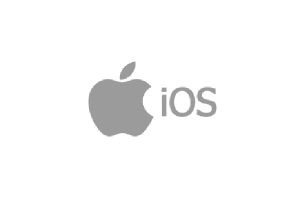
It is the 2nd most popular operating system available for smartphones. iOS is simple and has an excellent user interface. IOS doesn’t need many heavy resources to run. The latest version of iOS is iOS 15. It provides many new features like – improved Siri, enhanced UI, redesigned messaging apps, and many others.
iOS doesn’t have an update problem, as all its devices and software are managed by one company. The app store gets access to new apps and games before Android.
But iOS has its disadvantages too. Like Android, it doesn’t provide many customization tools. It does not offer many features which Android delivers.
Design
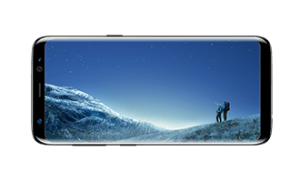
Design is an important issue when choosing a smartphone. A design of a phone gives it a premium feel and look. Otherwise, what is the point of purchasing a smartphone which feels cheap in hand? There are lots of great-designed smartphones available on the market. But remember, a great design does not only come by its look.
A great design consists of proper components placement like – speaker placement, fingerprint sensor placement, headphone jack placement, and button placement. These components should be placed in a way that would make them easy to reach.
Durability is also another concern in smartphone design. We, humans, tend to drop our phones very often. Before buying, you should ensure that your phone is water-resistant. Today, many phones come with IP68 certification, which means they can survive in 1-meter water for 30 minutes.
Another thing you need to make sure of is display protection. Make sure you at least buy a phone with Gorilla Glass protection, which would prevent damage from a few feet' drop.
Some phones, like the Moto Z Force, come with a shatterproof display; this can be helpful to people who drop their phones very often.
Camera
We have come to an age where smartphone cameras are the most crucial factor when choosing a smartphone. Many smartphones come with a perfect camera. As of today, you shouldn’t buy a phone with a resolution of less than 12 MP.
But, many people confuse the camera quality with the number of megapixels. Remember, more resolution doesn’t necessarily mean more quality.
When buying a smartphone with a good camera, there are many factors to consider. Speed – many smartphones with low budgets struggle with camera lag; they take too much time to take a picture. Dynamic range plays a vital role in picture quality; today’s smartphone uses HDR mode to bring tremendous dynamic range in photos.
Image stabilization – has two types – optical and software image stabilization. While both stabilization features are good, visual image stabilization provides a better result overall. It is beneficial when you’re taking a picture in low light.
Post-processing makes some positive changes to a photo after taking a shot and before showing it to us; it is mainly done by software. Post-processing reduces noise and increases dynamic range, color correction, etc.
Many smartphones come with a great cameras. The best examples would be – Pixel XL and iPhone 7 Plus.
Both the cameras take great pictures with unique features like – Pixel’s HDR+ mode, which enhances dynamic range in a phone by using some of the best post-processing algorithms, and iPhone 7 Plus Portrait Mode, which blurs the background to create a shallow depth of field effect.
Performance
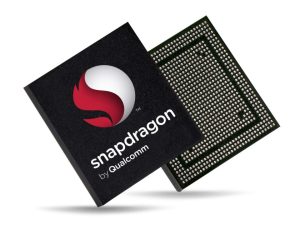
Many people make false assumptions about performance-like – if the phone has higher-end specs, it performs better; it is almost but not entirely true. The performance of phones depends on the hardware it needs to run, SoC, RAM size, Storage speed, and Optimization.
The iPhone doesn’t have many great specs, but it still runs smoothly; how? The answer is an operating system; ios don’t need high-end specs to run smoothly. The choice of language to build iOS and optimization because a limited number of devices makes it faster on low-end specs.
In the case of Android, it needs high-end specs to run smoothly. As a result, we see many high-end specs in Android phones like – octa-core processors, RAM size that might be bigger than your laptop has, and high-power batteries.
But, the performance of Android devices depends on many things, as explained further. Display resolution – the number of pixels a processor has to push.
Android customization level – A stock Android with very little or no customization has a lighter UI and better optimization, providing smoother and faster performance. As the customization level increases, it uses more RAM and CPU resources, making the version slower than stock Android.
RAM also plays an essential role in performance, as it remembers apps in its memory and loads them whenever needed. Apps are getting heavier every day, which uses more and more RAM.
So, it would be best if you didn’t buy a smartphone with RAM of any less than 3GB. Even if you have a low budget, great options are available, like – the Moto G5 Plus, which provides 4GB of RAM.
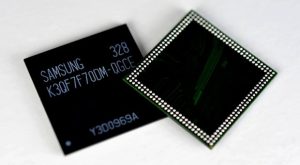
If you don’t have any budget issues and are an Apple fanboy, iPhone 7 Plus is a great option that runs on an A10 Fusion chip that provides some of the fastest and smoothest performance of any smartphone, including Android.
On Android phones, Snapdragon 835 is a top player; it is used in phones like Samsung Galaxy S8.
If you have a budget over 400 or 500$, you shouldn’t go down below Snapdragon 821. If you have a budget under 300$, you should buy a phone with Snapdragon 600 series SoC.
Battery
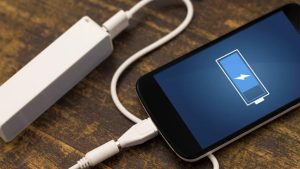
Battery life plays a vital role when choosing a Smartphone. A Smartphone with a bigger battery lasts longer; it’s a fact, but it’s not that simple. The battery life of a smartphone depends on many factors like – OS, SoC, Optimization, and Display.
A different operating system requires an additional amount of power to run. iOS can give excellent battery backup even on a small-capacity battery. As for Android, stock Android provides better battery backup than customized Android.
The chipset used in a phone has an impact on battery life. The different chipsets require an additional amount of power. Most Android phones use the Snapdragon chipset, which is energy efficient, but there are also many other chipset manufacturers like – MediaTek and Huawei.
Software optimization plays a vital role in a phone’s battery life; better-optimized phones use phone resources more efficiently, draining less juice from the battery. Also, when the phone is not in use, optimized software hibernates the apps running in the background, improving the phone’s standby time.
The display size and resolution also affect the battery life of a smartphone. A more prominent display and resolution mean the phone would have to power more pixels draining extra power battery.
If you are an Apple fanboy, you have good news their new phones come with power-efficient chips, bigger batteries, and consistently excellent optimized software.
Speaking of Android, it needs massive power to keep its phones alive until the end of the day.
As of today, you shouldn’t buy a phone with a battery of less than 3000 mAh, as Android OS and apps are getting heavier and heavier.
Display Resolution
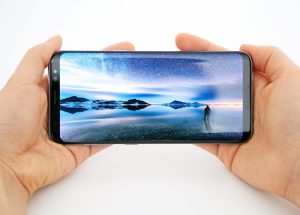
We use our phones for clicking pictures, social media, and multimedia experiences. The display is an important thing to look at when choosing a phone.
Today, you shouldn’t go below resolution- 1920×1080; although many phones come with a 1440p solution, if you have a low budget, then 1080p would also do just fine.
While display resolution is essential, it is not all we should look at. A big solution doesn’t make a display great; there are many other factors like – brightness, color accuracy, contrast, and many others.
Usually, a phone with an OLED display creates more accurate colors, deep blacks, and higher contrast. Samsung has always been a king in making great smartphone displays.
Their latest creation – Galaxy S22 Ultra – has the best display on any smartphone. Every high-end smartphone uses an AMOLED display, which is very popular due to its excellent quality.
If you are willing to spend a lot of money, they are great options available for you with some of the best in class displays like – the iPhone 7 Plus, Galaxy S8 Plus and S8, Pixel XL, and LG G6.
If you have a low budget, you can go for a low-resolution display (but not less than 1080p); the Moto G5 Plus and Moto M are excellent options for a budget smartphone with an impressive 1080p display.
Display Size
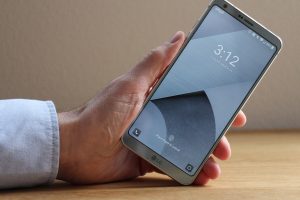
Though many people today prefer a smartphone with a big display, that doesn’t mean you should also have to; there is also an option available for smaller shows.
The Smaller display usually is 5.0 or less than 5.0-inch in size. It is suitable for people with small hand sizes, making holding and operating a phone easier with one hand. Phones like iPhone 7, iPhone SE, and Google Pixel are great options if you are looking for a small-sized display smartphone.
The medium-sized display has a 5.0 – 5.5-inch size, ideal for most humans for one-hand operation. Many great options are available in this size, like – iPhone7 Plus, Moto G5 Plus, and many others.
The giant-sized displays are displays that are bigger than 5.5 inches in size. It is made for two-handed operations; it gives a great multimedia experience and can contain more information on a screen.
But, remember, the bigger size also makes handling the phone difficult, you have to be careful, or you might drop it.
Many great options are available in this category; the first recommendation is Galaxy S8; other phones like Pixel XL and LG G6 also have great displays.
Internal Storage
Today’s apps are getting heavier and more prominent in size; a good game can take at least 1GB of storage space if you are a gamer. So, internal storage is essential to consider when buying a phone.
That is why Apple is no longer making 16GB iPhones. When buying a phone, make sure you at least go for 32 or 64GB internal storage, as we keep lots of data on our phones, like photos, documents, and videos.
Some Android phones offer support for MicroSD cards, which is a good thing as we can move our files on SD cards and free up space.
Other Things
There are also many other things you need to look at, it might not be necessary as the above things, but you should also take a look at them.
Fingerprint sensor
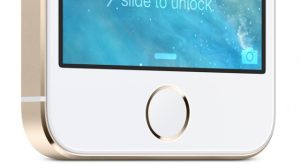
This feature became popular because the Apple fingerprint sensor uses our fingerprints to secure our phones. It makes it sure and easy to unlock your phone. You can use a fingerprint to pay for lots of stuff. Once, this feature was available only to high-end devices, but now it is available in almost every mid-range smartphone.
Wireless Charging & Fast charging
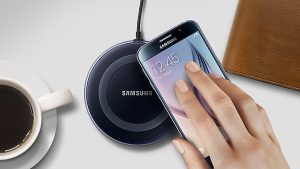
These features are well-adopted in High-end Android Smartphones. You have to put your smartphone on the wireless charger in wireless charging, and you are good to go.
The fast charging technology can be found in almost all phones with Snapdragon processors. It charges the phone faster by carrying more current into the battery.
It is beneficial when you are in a hurry; the fast charge can quickly charge your phone in under 15-20 minutes which would be enough for hours. But, both of these features are not yet adopted by Apple.
This is our guide for buying your perfect Smartphone. We hope this article helped you in finding your Smartphone. What do you think? Which phone did you decide to buy? Have any questions? Need a suggestion? Let us know in the comment section below; we would be happy to help.

